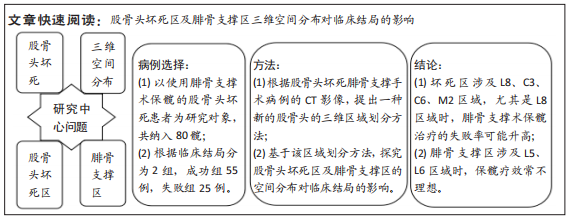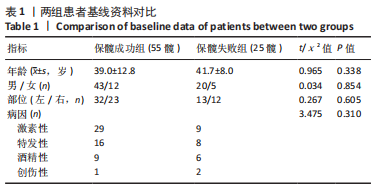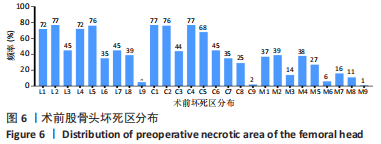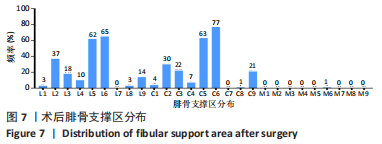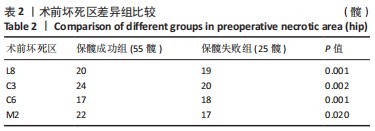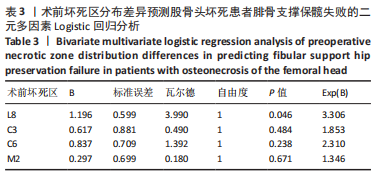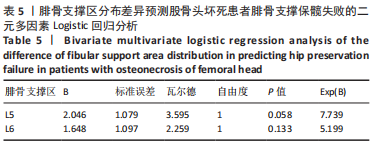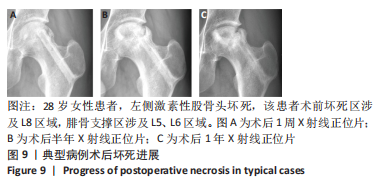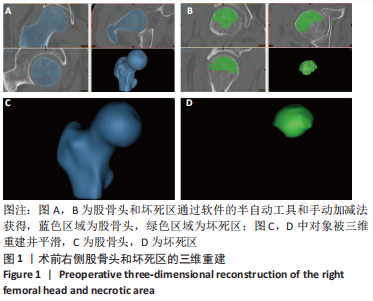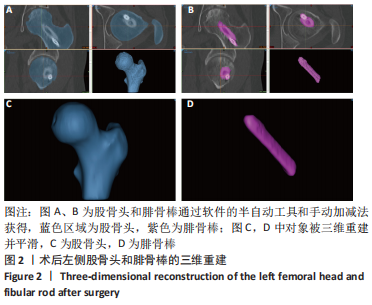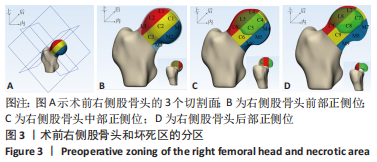[1] CUI L, ZHUANG Q, LIN J, et al. Multicentric epidemiologic study on six thousand three hundred and ninety five cases of femoral head osteonecrosis in China. Int Orthop. 2016;40(2):267-276.
[2] 雷志强,曾平,陈卫衡,等.股骨头坏死流行病学特点分析[J].中医正骨,2020,32(1):4-6.
[3] ZHAO D, ZHANG F, WANG B, et al. Guidelines for clinical diagnosis and treatment of osteonecrosis of the femoral head in adults (2019 version). J Orthop Translat. 2020;21:100-110.
[4] Microsurgery Department of the Orthopedics Branch of the Chinese Medical Doctor Association; Group from the Osteonecrosis and Bone Defect Branch of the Chinese Association of Reparative and Reconstructive Surgery; Microsurgery and Reconstructive Surgery Group of the Orthopedics Branch of the Chinese Medical Association. Chinese Guideline for the Diagnosis and Treatment of Osteonecrosis of the Femoral Head in Adults. Orthop Surg. 2017;9(1):3-12.
[5] CHEN L, HONG G, HONG Z, et al. Optimizing indications of impacting bone allograft transplantation in osteonecrosis of the femoral head. Bone Joint J. 2020;102-B(7):838-844.
[6] YUE J, GAO H, GUO X, et al. Fibula allograft propping as an effective treatment for early-stage osteonecrosis of the femoral head: a systematic review. J Orthop Surg Res. 2020;15(1):206.
[7] 李子荣,刘朝晖,孙伟,等.基于三柱结构的股骨头坏死分型——中日友好医院分型[J].中华骨科杂志,2012,32(6):515-520.
[8] RAJAN R, CHANDRASENAN J, PRICE K, et al. Legg-Calvé-Perthes: interobserver and intraobserver reliability of the modified Herring lateral pillar classification. J Pediatr Orthop. 2013;33(2):120-123.
[9] 凌观汉,李永斌,潘学文,等.中日友好医院分型股骨头坏死腓骨植入治疗的三维有限元分析[J].中国组织工程研究,2020,24(18): 2817-2822.
[10] HU LB, HUANG ZG, WEI HY, et al. Osteonecrosis of the femoral head: using CT, MRI and gross specimen to characterize the location, shape and size of the lesion. Br J Radiol. 2015;88(1046):20140508.
[11] ASADA R, ABE H, HAMADA H, et al. Femoral head collapse rate among Japanese patients with pre-collapse osteonecrosis of the femoral head. J Int Med Res. 2021;49(6):3000605211023336.
[12] KUBO Y, MOTOMURA G, IKEMURA S, et al. The effect of the anterior boundary of necrotic lesion on the occurrence of collapse in osteonecrosis of the femoral head. Int Orthop. 2018;42(7):1449-1455.
[13] YOON BH, MONT MA, KOO KH, et al. The 2019 Revised Version of Association Research Circulation Osseous Staging System of Osteonecrosis of the Femoral Head. J Arthroplasty. 2020;35(4):933-940.
[14] 李子荣.股骨头坏死成功保髋新理念[J].中医正骨,2018,30(10):1-3.
[15] 李鹏飞,葛辉,庞智晖,等.基于影像学表现的股骨头坏死塌陷预测的研究进展[J].医学综述,2016,22(15):3023-3026.
[16] 彭小星,赵刚,吴琳琳.CT和X线诊断老年股骨头坏死的临床价值[J].中国老年学杂志,2018,38(13):3183-3185.
[17] HINDOYAN KN, LIEBERMAN JR, MATCUK GR JR, et al. A Precise and Reliable Method of Determining Lesion Size in Osteonecrosis of the Femoral Head Using Volumes. J Arthroplasty. 2020;35(1):285-290.
[18] 刘光波,马海洋,卢强,等.股骨头骨坏死囊性变位置分布特征[J].解放军医学院学报,2019,40(12):1109-1113,1137.
[19] 梁学振,刘光波,刘金豹,等.基于CT三维重建的激素性股骨头坏死患者股骨头坏死组织分布研究[J].中国修复重建外科杂志, 2020,34(1):57-62.
[20] LIU GB, LU Q, MENG HY, et al. Three-Dimensional Distribution of Bone-Resorption Lesions in Osteonecrosis of the Femoral Head Based on the Three-Pillar Classification. Orthop Surg. 2021;13(7):2043-2050.
[21] BAHK JH, JO WL, KIM SC, et al. Lateral pillar is the key in supporting pre-collapse osteonecrosis of the femoral head: a finite element model analysis of propensity-score matched cohorts. J Orthop Surg Res. 2021; 16(1):728.
[22] ZHANG Z, YU T, XIE L, et al. Biomechanical bearing-based typing method for osteonecrosis of the femoral head: ABC typing. Exp Ther Med. 2018;16(3):2682-2688.
[23] ZHANG Y, TIAN K, MA X, et al. Analysis of damage in relation to different classifications of pre-collapse osteonecrosis of the femoral head. J Int Med Res. 2018;46(2):693-698.
[24] KARASUYAMA K, YAMAMOTO T, MOTOMURA G, et al. The role of sclerotic changes in the starting mechanisms of collapse: A histomorphometric and FEM study on the femoral head of osteonecrosis. Bone. 2015;81:644-648.
[25] WEN PF, GUO WS, ZHANG QD, et al. Significance of Lateral Pillar in Osteonecrosis of Femoral Head: A Finite Element Analysis. Chin Med J (Engl). 2017;130(21):2569-2574.
[26] WANG P, WANG C, MENG H, et al. The Role of Structural Deterioration and Biomechanical Changes of the Necrotic Lesion in Collapse Mechanism of Osteonecrosis of the Femoral Head. Orthop Surg. 2022; 14(5):831-839.
[27] WANG C, WANG X, XU XL, et al. Bone microstructure and regional distribution of osteoblast and osteoclast activity in the osteonecrotic femoral head. PLoS One. 2014;9(5):e96361.
[28] XU J, ZHAN S, LING M, et al. Biomechanical analysis of fibular graft techniques for nontraumatic osteonecrosis of the femoral head: a finite element analysis. J Orthop Surg Res. 2020;15(1):335.
[29] HUANG L, CHEN F, WANG S, et al. Three-dimensional finite element analysis of silk protein rod implantation after core decompression for osteonecrosis of the femoral head. BMC Musculoskelet Disord. 2019;20(1):544. |
